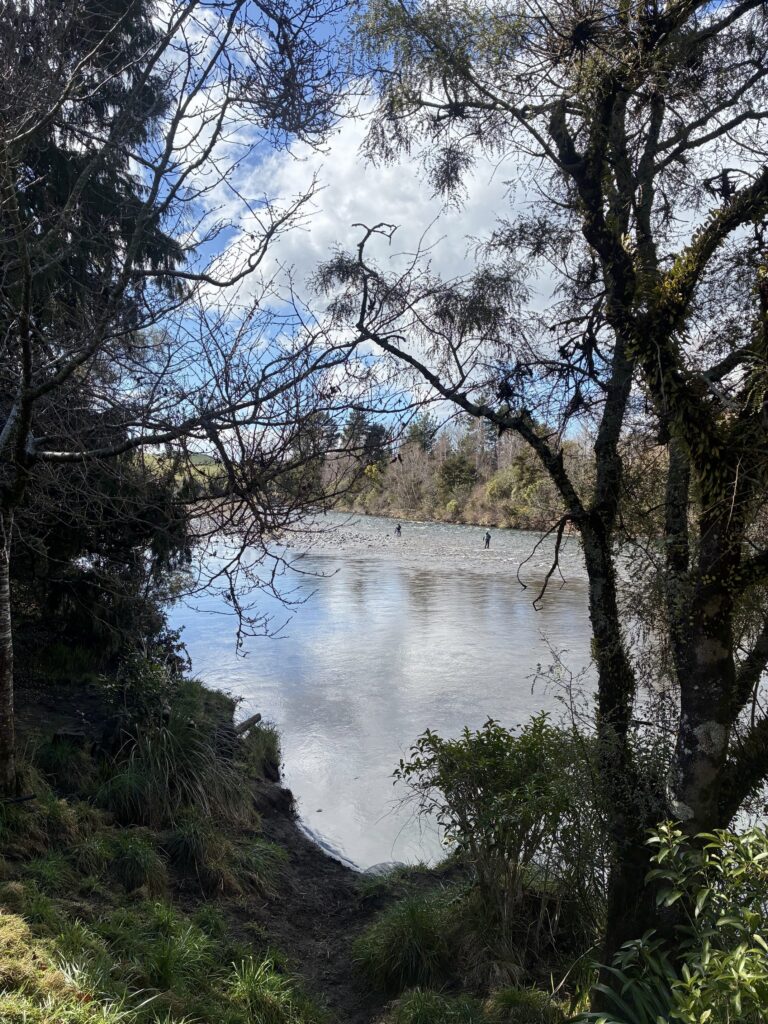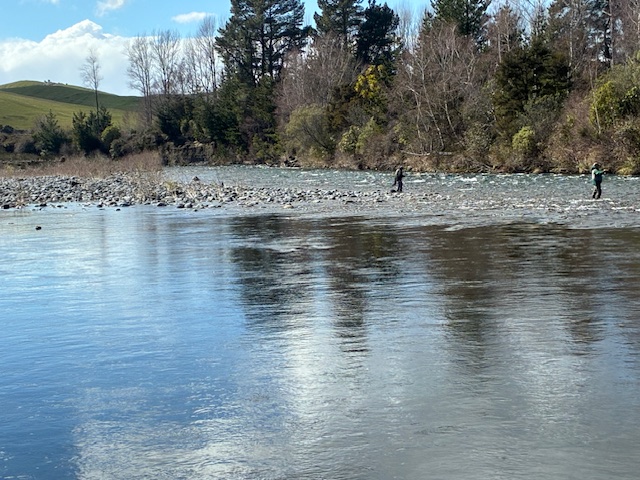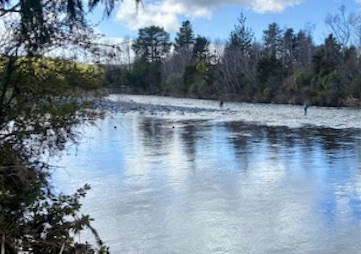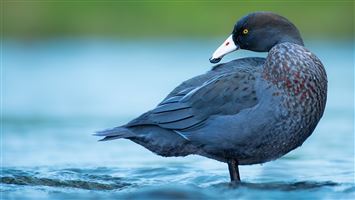
A previous TRM post mentioned how DOC are actively promoting the concept of “nay-chur-ring” to encourage tourists to understand nature. Following their lead, TRM posted some photos as examples to illustrate what Turangi can offer, using wild trout spawning in the shallows. This attracted attention from a West Island inmate who complained he could not find them. He loved the natural river trout fishing environment and was keen enough to accompany TRM’s guide dog down to the Tongariro River Trail to have another attempt at nay-chur-ring, TRM style.

The trout were still there, busy watching each other and guarding their spawning redd, but he had not recognised the signs. Tourists need to be a bit sneaky using a quiet slow approach and then play statues and wait for the fish to move and reveal their presence. Then he noticed some of the stones had wavy tails on them and moved sideways. They were only about three metres from where he was standing. Polaroid sunglasses definitely help spotting them.

His patience was rewarded with the bonus of another memorable nay-chur-ring experience when a pair of rare endangered blue ducks (Whio) cruised past. They seemed quite relaxed despite two anglers casting into the Island Pool behind them. DOC advise they are under threat, although several pairs are nesting along the banks beside the town pools. (Note DOC’s Conservation status: Threatened–Nationally Vulnerable) The Tongariro River may be the only location where they are usually easy to spot close to town. In the photo below look for the two dots in the calm bypass behind the anglers.

So Turangi provided two nay-chur-ring experiences in one place within a five-minute walk of TRM. The tourists were delighted.
If you want to take your kids nay-chur-ring these holidays then book now at TRM.

From DOC’s website:
A unique taonga
Blue duck/whio are a taonga (treasured) species that Māori have a strong cultural, spiritual, and historic connection with.
Their Māori name is whio in the North Island or ko whio whio in the South Island, which depicts the call of the male bird. They are forever watchful – they will always see you before you see them, and the male will sound the alarm call.
Whio are believed to be an ancient species of waterfowl, that appeared at a very early stage in evolutionary history. Their isolation in New Zealand has resulted in unique anatomical and behavioural features.
The whio is an iconic back-country species, and it features on the New Zealand $10 note.
The blue duck is a river specialist, and one of the few waterfowl worldwide that live year round on fast-flowing rivers.
They are a key indicator of healthy rivers and streams. They require clean, fast flowing streams in the forested upper catchments of rivers that provide high water quality, low sediment loadings, stable banks, over head canopy cover, and lots of varied invertebrate communities. The more breeding pairs of blue duck the healthier the river.
